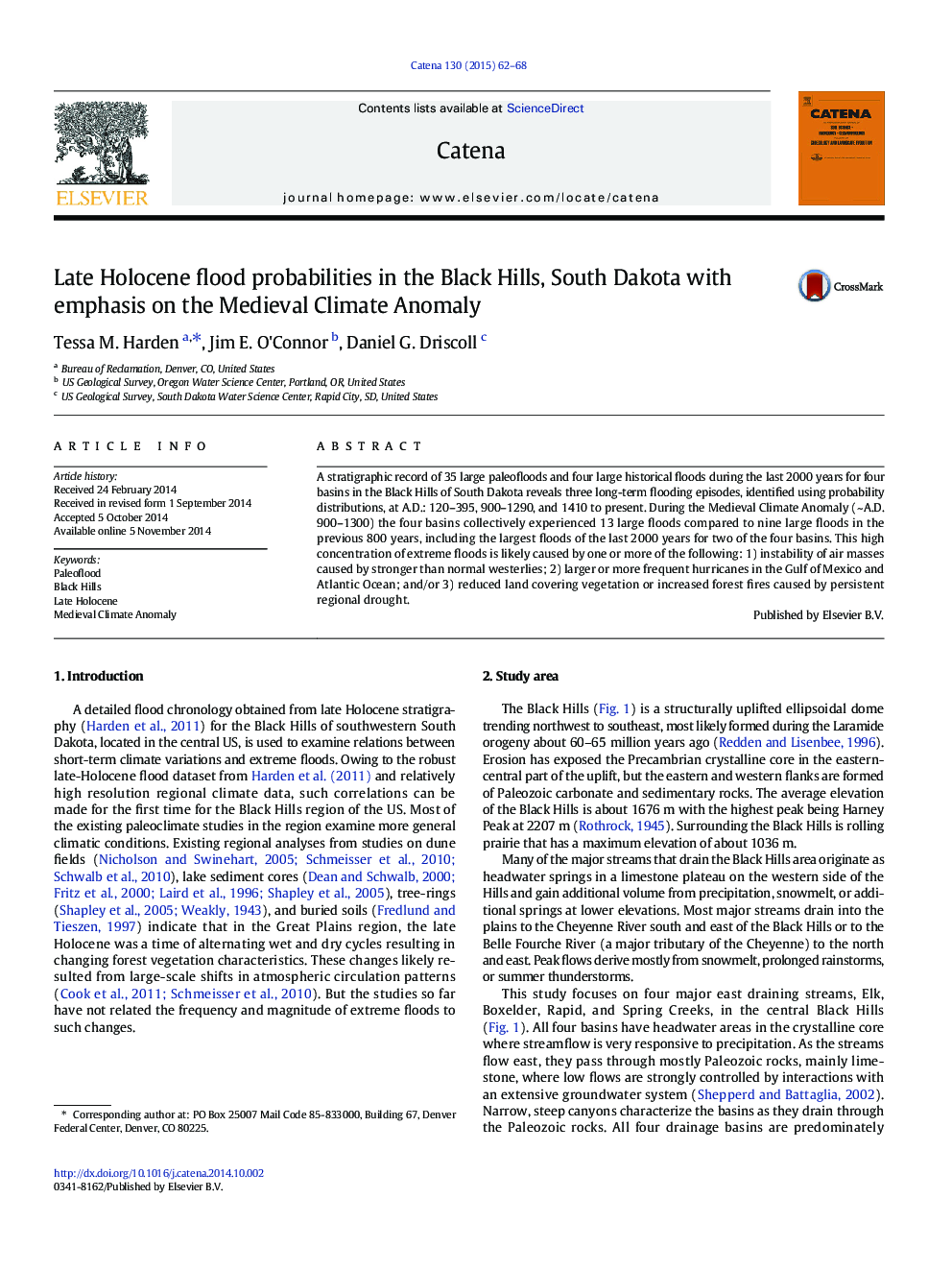| کد مقاله | کد نشریه | سال انتشار | مقاله انگلیسی | نسخه تمام متن |
|---|---|---|---|---|
| 4571148 | 1629222 | 2015 | 7 صفحه PDF | دانلود رایگان |
• We examined flood stratigraphy along 4 main rivers in the Black Hills, South Dakota.
• We compared the timing of the floods to short-term climate variabilities.
• Three multi-century episodes of extreme floods occurred in the last 2000 years.
• The Medieval Climate Anomaly experienced the highest concentration of floods.
A stratigraphic record of 35 large paleofloods and four large historical floods during the last 2000 years for four basins in the Black Hills of South Dakota reveals three long-term flooding episodes, identified using probability distributions, at A.D.: 120–395, 900–1290, and 1410 to present. During the Medieval Climate Anomaly (~ A.D. 900–1300) the four basins collectively experienced 13 large floods compared to nine large floods in the previous 800 years, including the largest floods of the last 2000 years for two of the four basins. This high concentration of extreme floods is likely caused by one or more of the following: 1) instability of air masses caused by stronger than normal westerlies; 2) larger or more frequent hurricanes in the Gulf of Mexico and Atlantic Ocean; and/or 3) reduced land covering vegetation or increased forest fires caused by persistent regional drought.
Journal: CATENA - Volume 130, July 2015, Pages 62–68
